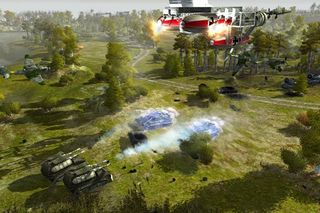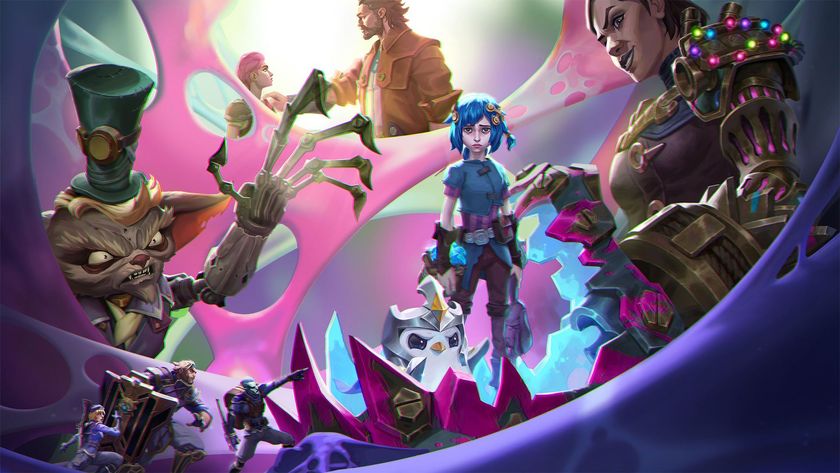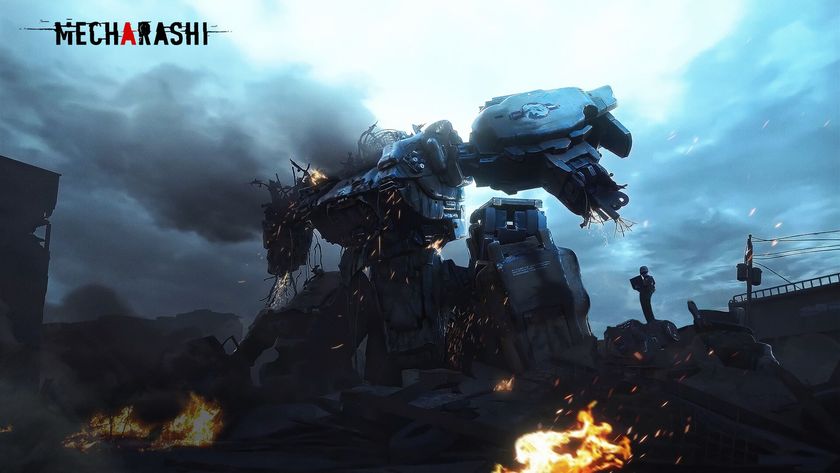War Front strategy guide
Our exhaustive guide will give you the upper hand on opponents online or off
Unit-Specific Combat Tips
Although all nations share similar types of units, some have special characteristics you can exploit to make the most of their capabilities. We touched on some of these in our Force Analysis, but here’s a bit more info on the more important ones.
Exoskeleton (German): This walking war machine is available at Tech Level 2, but at that level it is armed only with machine guns. Try to wait until you reach Tech Level 3 to build them; at that point they’ll have rockets and are worth the cost. Without rockets, they’re almost no match for other armored units.
Giant Zeppelin (German): There is no other aircraft in the game like the slow-moving, heavy-hitting Zeppelin. Although it can devastate ground targets, it’s vulnerable to AA fire. You should have it travel above a well-balanced armored formation that includes Wirbelwinds or Rheintochters to shoot down enemy interceptors. Think of it as a “guardian angel”— but one that’s ready to give the enemy hell with its high-powered air-to-ground cannons. You might also want to bring along a couple of interceptors to escort the Zeppelin as extra protection against air-to-air attacks by enemy planes.
Ice Spitter (Russian): You must use the Ice Spitter in conjunction with other units — even a dozen Ice Spitters won’t damage a target. But once they freeze a target, even weak armored units or anti-tank infantry can finish the job.

Kharkov Rampager and other Soviet tanks (Russian): Russian tanks can dig in to significantly increase their ability to take enemy fire. This is particularly useful when you use the Kharkov's Rampage skill, which drastically boosts the damage its shells cause — but the Kharkov also suffers greater damage when in this mode.
Sign up to the 12DOVE Newsletter
Weekly digests, tales from the communities you love, and more
Vodka Dealer: If you’re a Russian commander, you should never send out infantry units without a Vodka Dealer once he’s available for production: he makes every soldier in his radius invincible. Playing against a Russian force and see soldiers burping? Then look for the Vodka Dealer and make him the A-1 target!
P-38 Lightning (Allied): Upgraded Lightnings can fire air-to-ground rockets; when possible, try to manually control the firing of these valuable weapons so they aren’t wasted. It takes some time for the planes to reload the rockets, and you don’t want a plane without them because it fired a salvo at a target that was already in the process of being destroyed.
Earthquake Bomb (Allied): The Earthquake Bomb is primarily intended to bring down buildings—lots of them—but it also leaves craters that can impair the progress of enemy armored units. You can use this to your advantage in an emergency situation to slow the advance of an enemy’s armored column, particularly if you crater a narrow passage the enemy must use to reach your base. Keep in mind this isn’t a particularly the most cost-effective method of using the Earthquake bomb: that’s why we recommend it only in emergency situations.
Nuclear Bomb (Allied): You don’t need to be a nuclear physicist to appreciate the damage done by this weapon, but did you know it keeps on giving long after the mushroom cloud is gone? That’s right: the blast zone is inundated with deadly radiation for a while after the blast, damaging any enemy units that move into the area to rebuild.













